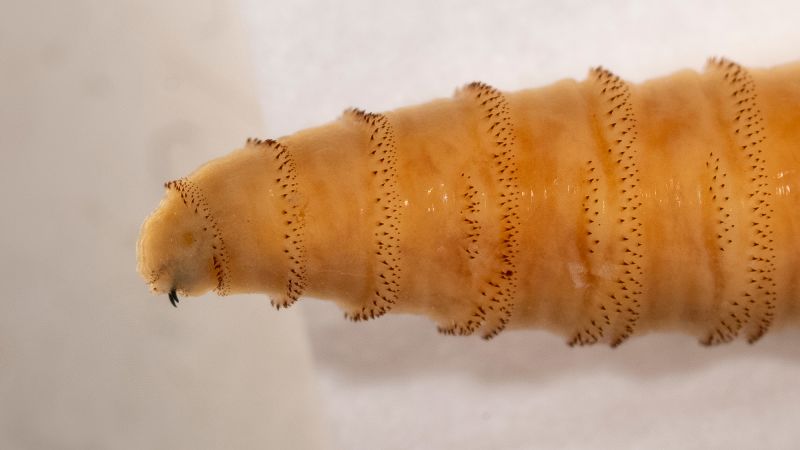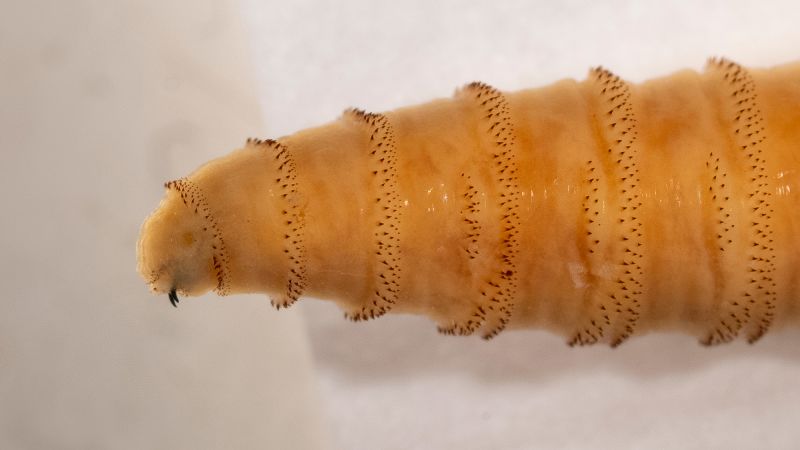Aerial Fly Releases: The US Government's Novel Approach To Agricultural Pests

Welcome to your ultimate source for breaking news, trending updates, and in-depth stories from around the world. Whether it's politics, technology, entertainment, sports, or lifestyle, we bring you real-time updates that keep you informed and ahead of the curve.
Our team works tirelessly to ensure you never miss a moment. From the latest developments in global events to the most talked-about topics on social media, our news platform is designed to deliver accurate and timely information, all in one place.
Stay in the know and join thousands of readers who trust us for reliable, up-to-date content. Explore our expertly curated articles and dive deeper into the stories that matter to you. Visit Best Website now and be part of the conversation. Don't miss out on the headlines that shape our world!
Table of Contents
Aerial Fly Releases: The US Government's Novel Approach to Agricultural Pests
Introduction: The United States government is deploying a surprisingly effective, and somewhat unexpected, weapon in the ongoing battle against agricultural pests: flies. No, this isn't a sci-fi movie plot. The USDA is utilizing aerial releases of sterile male insects, a technique known as the Sterile Insect Technique (SIT), to dramatically reduce populations of damaging pests and minimize the need for harmful pesticides. This innovative approach is proving to be a game-changer for environmentally conscious agriculture and food security.
What is the Sterile Insect Technique (SIT)?
The SIT is a biological control method that leverages the principles of insect reproduction. Millions of male insects are raised in specialized facilities, then sterilized using radiation. These sterile males are then released into the environment where they mate with wild females. The resulting eggs are infertile, leading to a gradual decline in the pest population over time. This method is highly specific, targeting only the pest species and leaving beneficial insects unharmed.
Why Flies? Targeting Specific Pests:
The USDA isn't releasing just any flies. Specific species are selected based on their impact on particular crops. Current projects focus on various fruit flies, notorious for devastating harvests of fruits and vegetables. For example, the Mediterranean fruit fly ( Ceratitis capitata) is a significant agricultural threat, causing billions of dollars in damage annually. By releasing massive numbers of sterile male Medflies, the USDA aims to disrupt their reproductive cycle and significantly reduce infestations.
Successful Deployments and Future Applications:
Aerial releases are proving incredibly effective in large-scale pest control. Recent deployments in California and other states have demonstrated a significant reduction in targeted pest populations. The advantage of aerial dispersal is its ability to cover vast areas quickly and efficiently, making it ideal for widespread infestations. This methodology offers a significant improvement over traditional methods like ground spraying, which can be labor-intensive, expensive, and environmentally damaging.
Advantages of Aerial Fly Releases:
- Environmentally Friendly: Reduces reliance on harmful chemical pesticides, protecting beneficial insects and pollinators.
- Cost-Effective (Long-Term): While initial investment in breeding and release programs is significant, the long-term reduction in crop losses often surpasses the cost.
- Highly Specific: Targets only the pest species, minimizing harm to non-target organisms.
- Sustainable: Offers a long-term solution to pest management without the need for repeated applications.
- Improved Food Security: Protects crops, ensuring a more stable and reliable food supply.
Challenges and Future Research:
While promising, the SIT faces challenges. Maintaining large-scale breeding facilities, developing efficient sterilization techniques, and accurately predicting weather patterns for optimal release timing are all crucial considerations. Ongoing research focuses on improving these aspects to enhance the effectiveness and scalability of the program. Further research is also exploring the use of SIT against other agricultural pests, broadening its potential applications.
Conclusion:
The USDA's adoption of aerial fly releases represents a significant advancement in agricultural pest control. This environmentally friendly and effective technique offers a sustainable solution for protecting crops and enhancing food security. As research progresses and the technique becomes more refined, we can expect to see even wider adoption and a significant reduction in reliance on harmful chemical pesticides across the agricultural landscape. This innovative approach underscores the importance of scientific innovation in addressing critical challenges to global food production. Learn more about the USDA's pest management programs by visiting their .

Thank you for visiting our website, your trusted source for the latest updates and in-depth coverage on Aerial Fly Releases: The US Government's Novel Approach To Agricultural Pests. We're committed to keeping you informed with timely and accurate information to meet your curiosity and needs.
If you have any questions, suggestions, or feedback, we'd love to hear from you. Your insights are valuable to us and help us improve to serve you better. Feel free to reach out through our contact page.
Don't forget to bookmark our website and check back regularly for the latest headlines and trending topics. See you next time, and thank you for being part of our growing community!
Featured Posts
-
 Us Government To Release Millions Of Flies From Planes A Controversial Pest Control Strategy
Jul 11, 2025
Us Government To Release Millions Of Flies From Planes A Controversial Pest Control Strategy
Jul 11, 2025 -
 Uk Asylum Seekers A Comprehensive Look At The Push And Pull Factors
Jul 11, 2025
Uk Asylum Seekers A Comprehensive Look At The Push And Pull Factors
Jul 11, 2025 -
 Mahmoud Khalil Seeks 20 Million Details Of The Lawsuit Against The Trump Administration
Jul 11, 2025
Mahmoud Khalil Seeks 20 Million Details Of The Lawsuit Against The Trump Administration
Jul 11, 2025 -
 Heartbreaking Images Four Infants Battle For Life In Overcrowded Gaza Icu
Jul 11, 2025
Heartbreaking Images Four Infants Battle For Life In Overcrowded Gaza Icu
Jul 11, 2025 -
 Thursdays Game 2 Brandon Waddell Takes The Mound For Phillies
Jul 11, 2025
Thursdays Game 2 Brandon Waddell Takes The Mound For Phillies
Jul 11, 2025
Latest Posts
-
 Love Island Usas Amaya And Bryan Post Show Relationship Update
Jul 17, 2025
Love Island Usas Amaya And Bryan Post Show Relationship Update
Jul 17, 2025 -
 Ynw Melly Double Murder Case Retrial Set For September Following Mistrial
Jul 17, 2025
Ynw Melly Double Murder Case Retrial Set For September Following Mistrial
Jul 17, 2025 -
 De Chambeau Explains Why Public Courses Present Unexpected Challenges
Jul 17, 2025
De Chambeau Explains Why Public Courses Present Unexpected Challenges
Jul 17, 2025 -
 Historic High For Tsmc Q2 Profits Up 60
Jul 17, 2025
Historic High For Tsmc Q2 Profits Up 60
Jul 17, 2025 -
 Los Cabos Open Basavareddy Claims Victory Alvarez Advances
Jul 17, 2025
Los Cabos Open Basavareddy Claims Victory Alvarez Advances
Jul 17, 2025
